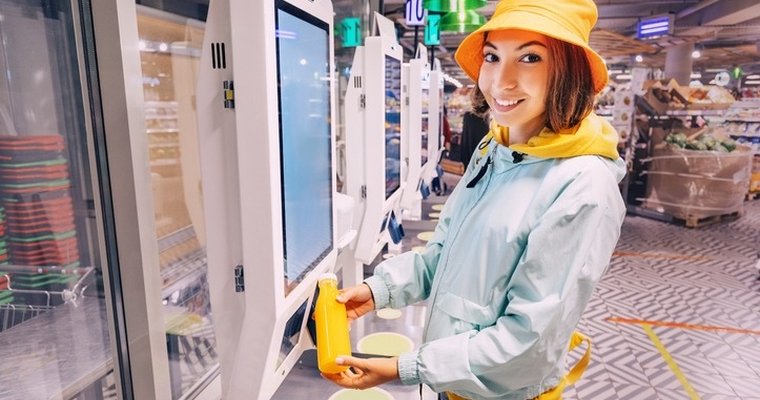 Image provided by iStock.
Image provided by iStock.
Self-serve kiosks and quick-service stores have always been among the best, most efficient options to quickly grab food and beverage on the go.
Today, technology continues to evolve rapidly.
It is helping operators take the guesswork out of their service needs. It also helps reduce time wasted on managing inventory control and restocking. In addition, it is helping reduce lost opportunity cost and lackluster sales as well as improve product placement.
Technology also helps with employee-related costs, costs that both self service and quick-service operators associate with keeping their businesses running.
Factor into these costs the ever-changing demands of the consumer. Operators need to keep ahead of service trends related to product offerings. They need to know actual products sold and measure via data and collected insight what customers want, and when.
Despite all this, success is still no guarantee.
Self service, quick-service and retail, in general, are rapidly changing with massive shifts in the operating model. Many of these shifts are the result of changes in behavior and even the rise of autonomous, AI-powered everything. During COVID-19, for example, consumers preferred contactless experiences, especially regarding payments.
Self-serve kiosks and quick-service stores are especially poised to win with this trend, not just e-commerce giants like Amazon. Because of this transformation, self-service operators and quick-service operators can transform their operations into digitally-based and intelligent places requiring fewer people to operate.
For example, RBC Capital recently examined cashierless retail stores to determine potential revenue at an Amazon Go in San Francisco. Based on its observations of traffic patterns, RBC estimated about 400 to 700 customers per day visited each of the roughly 2,000-square-foot Amazon Go stores, which generated sales of $1.1 million to $2 million annually, assuming an average purchase of $10. At the high end of that range, it works out to twice the sales of a typical U.S. convenience store.
Times changing with technology
New technologies continue to change the autonomous retail and self-service landscapes. Autonomous retailers and self-service operators can now use data-driven approaches to help provide better products and services for shoppers. Information regarding interactions and purchases can be sent to operators and retailers in real time.
There are also technologies that enhance the customer experience by providing frictionless shopping. These include artificial intelligence and interactive displays, which allow for more efficient, touchless self-checkouts. These reduce congestion and long waiting times. They also reduce a shopper’s contact with surfaces, which is important when curbing the spread of an infectious disease.
Computer vision is another technological development that allows for cashierless checkouts. Machines can utilize object recognition to detect and count products in real time. Through this, operators can target the market and change or eliminate products that receive little customer attention. Another benefit this brings is that machines can also immediately detect incidents of shoplifting or property damage.
More opportunities
Retailers have the opportunity to bridge brick-and-mortar stores with e-commerce. AI-powered stores can better optimize inventory, which can solve integration issues when combining digital and physical retail. They can utilize inventory management technology to manage items both for physical stores and e-commerce. They can also gain insight about the inventory in their other warehouses or stores.
This means that both retailers and consumers can receive real-time updates about product availability. E-commerce applications can also be updated instantly.
Prepare for smart city Integration
Behavior recognition and product learning algorithm engines also now allow retailers to accurately identify consumer-to-product interactions and other shopping behaviors. This allows machines to provide more personalized customer experiences. Technology-enabled personalization for retail allows for automatic adjustments during the point of sale depending on past individual consumer behavior.
Both technology-enabled personalization and computer vision prepare retail stores for smart city integration, as wireless technologies are now used to improve the connectivity, efficiency and quality of life in cities. AI technologies create highly digitized stores that can connect to the Internet of Things, a primary feature of smart cities.
AI computer vision technology — not just RFID, static computer vision or a combination of digital technologies and human effort — provides an identification accuracy rate of more than 99.9%. All of these factors are beneficial to the modern, open-minded retailer or self-service operator seeking an edge over the competition.
Engage consumers
Digitized, smart, AI-driven self service and retailing provide a better overall customer experience. It provides deep and detailed insights to the operator for engagement. It provides more efficient inventory control and lets operators profile customers and cater to purchase preferences.
Digital displays also allow consumers to know more about product features, prices and availability. They can also obtain this information through their smartphones.
Likewise, self-service operators can now monitor machine performance in real time and gain an immediate understanding of the temperature and the number of products left in the machine. These technologies also let operators receive notifications about restocking needs, predict sales forecasts and help with planogram optimization.
Autonomous and AI-based technology gives the ability to review and analyze current transactions and customer preferences. It also allows the ability to better plan the introduction of new products based on sales tests. Data acquired can also help maximize revenue through product placement and items displayed.
Self service and retail transformation continue to gain momentum and operators must embrace some of these changes to ensure their competitive edge. This affects their ability to serve customers how they wish to be served and to seize on the behavior shifts fueled by the pandemic.
Ignoring some of these transformations may mean some will be surpassed by those who see that the self service and retailing world is heading towards a smarter and more integrated future — one powered by digital technology and artificial intelligence.
For an update on how the coronavirus pandemic is affecting convenience services, click here.

